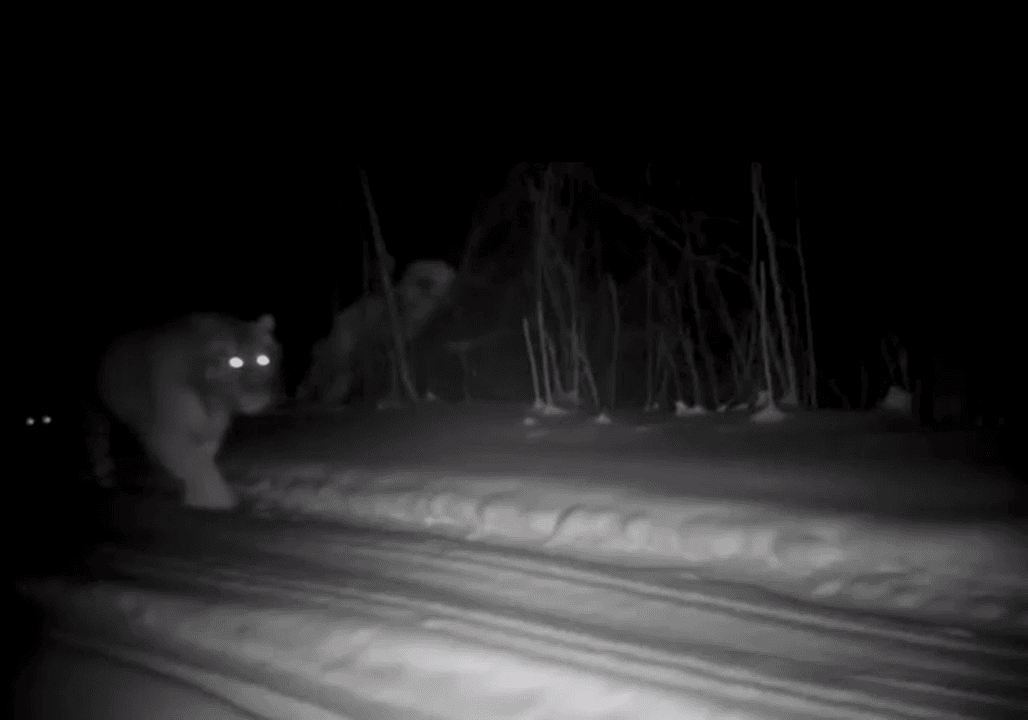Tiger - Belize - All
Donnie Vincent — hunting blogger and filmmaker: bow hunting, trophies, and wildlife films
Donnie Vincent is a renowned hunting blogger, biologist, and documentary filmmaker who has become the voice of ethical and conscious hunting in the wild. His career began with field research on tigers in Nepal and salmon in Alaska, and later evolved into creating emotional visual content that captures the essence of wild hunting.
He actively maintains an Instagram blog where he shares photos from his hunts, film clips, and reflections on nature and the life of a hunter. Donnie's posts are not just content, but a philosophy of hunting as a way of interacting with nature.
Where Donnie Vincent hunts: the wilds of North America and beyond
Donnie hunts in extreme and remote corners of the world:
Alaska and the Aleutian Islands (Adak) — hunting caribou, bears, and sea ducks
North Dakota (Badlands) — one of his most iconic trophies: a white-tailed deer nicknamed Steve
Newfoundland and British Columbia — trophy hunting for moose and mountain goats
Patagonia, Colorado, Mexico, Canada — expeditions in complete isolation from civilization
These places become the backdrop for his films and publications, where every frame emphasizes the importance of the balance between hunting and nature conservation.
Bow hunting: Donnie Vincent's signature style
One of the key themes in his work is bow hunting. It is not only a method of hunting, but also a philosophy of respect for the animal, attentiveness, and patience. Donnie chooses the bow as his primary tool, emphasizing the complexity, ethics, and antiquity of this type of hunting. He also uses modern firearms (such as the Benelli Lupo) when hunting conditions warrant it.
Types of hunting and trophies of Donnie Vincent
Donnie Vincent is a proponent of conscious trophy hunting. His achievements include:
White-tailed deer (including the famous Steve)
Caribou, bears, moose, snow sheep, pumas
Waterfowl and partridges
Each trophy is not just an achievement, but the result of a thorough analysis of the population, the age of the animal, and the ecological soundness of its selection.
Hunting cinema: Donnie Vincent's documentaries
Donnie founded Sicmanta, a company specializing in the production of hunting films. His works have been recognized at international film festivals:
The River's Divide — hunting white-tailed deer in North Dakota
The Other Side — a five-year project covering bear hunting
Winds of Adak — hunting on Adak Island
Terra Nova — a three-day expedition in Newfoundland
These films do not simply tell the story of the hunt — they immerse the viewer in the atmosphere of the wild, show the emotional side of hunting, and remind us of our responsibility to nature.
Donnie Vincent and hunting as a way to preserve nature
Donnie is an active supporter of environmental initiatives. He raises the issue of ecological balance, talking about how responsible hunting helps maintain the health of ecosystems. His approach is not for the sake of trophies, but for the future of wildlife.
Example: hunting the surplus caribou population on Adak Island is not only hunting, but also protecting local landscapes from degradation.
Donnie is not just a hunter, but an influencer of modern hunting culture. His Instagram is a source of inspiration for hunters and those who want to gain a deeper understanding of nature. He proves that hunting can be a deeply ethical, cultural, and creative practice.
Donnie Vincent's Instagram (146k followers): @donnie_vincent
Amur Tiger in Russia
The number of Amur tigers in the East of Russia has increased significantly since the protection program was launched 15 years ago. And apparently the tiger protection program is bearing fruit. There are really a lot of tigers in the Amur region and Primorsky Krai, and it is necessary to regulate their number.
Currently, residents of Primorsky Krai have asked local governments and Russian President Vladimir Putin to clarify the situation around the dangerous Amur tiger, which is beginning to pose a threat to the inhabitants of the entire Far East.
Residents say that they need protection from breeding and daring animals, which no one can offer them. Animals, which have long been more than 700 people, are increasingly acting boldly and attacking dogs and cows. There were also cases of attacks on people.
In addition to the letter, the president and governor also received video messages from residents confirming their willingness to go all the way until the situation is more or less successfully resolved.
Residents also defended their colleagues from the direct threat of being killed by a amur tiger, resented the incident with the inspector who shot the animal, after which a criminal case was opened.
After killing 2 dogs in the village, the Amur tiger climbed to the roof of 1 of the hut and looked down at the hunting service, which arrived for his capture, called by excited residents and when one of the experts approached, the tiger jumped on the man and knocked to the ground, and the 2nd hunter literally saved the life of his colleague by shooting the beast with a rifle.
The Governor of Primorsky Krai has already held a special meeting on the Amur tiger problem. He said: "We must not forget that the Amur tiger is a specially protected species and, on behalf of President Vladimir Putin, work is underway to preserve these unique predators. Let me remind you that based on scientific research and the experience of our population, humans are not hunted by this wild animal, the Amur tiger. At this council, I propose to consider specific issues and decisions that can be taken to ensure the safety of citizens in conflict situations with the Amur tiger, to prepare an appeal to the Ministry of Natural Resources of the Russian Federation, and a proposal to develop a clear methodology for dealing with conflict situations with tigers. The priority of human safety is first and foremost, but it is also necessary to carry out biotechnological measures to create a food base in those hunting farms and national parks where the Amur tiger can live."
https://m.uh.app/news/963534d0-d121-11ef-9f14-dde0bbf4cc1c
Tiger Dog Hunter Is Released. Watch the video.
An impressive video of the Ministry of Natural Resources and Environment releasing Amur tiger recently captured in the Khasansky district, which devoured a bunch of dogs there.
Look how big he is, he's kicked his sides pretty well on the dogs. It was taken far away and released on the border of Khabarovsk and Primorsky Territories.
Since the beginning of 2025, a large number of cases of Amur tiger attacks on domestic animals have been recorded in Primorsky Krai (Eastern Russia). Residents of some villages began to fear not only for their pets, but also for their lives. At the end of the year, attacks occurred almost every day. For a long time, the tiger went unpunished. Hunters could not be involved in the capture of the killer tiger. Amur tigers in Russia are under special protection, including under the personal protection of President Vladimir Putin.
The Amur tiger is the ruler of vast territories, the area of which is 300-500 km2 for the female and 600-800 km2 for the male. If there is enough food within its territory, then the tiger does not leave its territory. When there is a shortage of game, the number of tiger attacks on livestock and dogs increases.
The fact that five conflict tigers are being captured in the south of Primorye became known at the end of December 2024. The predators went out to the settlements of Primorsky, Andreevka, Barabash, Filippovka and attacked pets.
In the vicinity of the village of Filippovka, Khasansky municipal District, employees of the Primorsky Hunting Supervision, with the support of employees of the Land of the Leopard National Park, captured a conflicted Amur tiger that frightened local residents and attacked pets. This was reported by the press service of the Ministry of Nature of Primorsky Krai.
The Ministry of Nature of Primorsky Krai reported that in 2024 more than 200 cases of Amur tiger attacks on domestic animals were registered. The main causes of conflict situations were the increased population of Amur tigers and neglected grazing of farm animals and chained dogs in unfenced areas, which provokes the release of tigers into populated areas.
The Amur tiger belongs to the largest subspecies. The coat is thicker than that of tigers living in warmer areas, and its color is lighter. The main coat color in winter is orange, and the belly is white.
The Amur tiger belongs to the largest subspecies. The coat is thicker than that of tigers living in warmer areas, and its color is lighter. The average weight range of Amur tigers is 200-330 kg. The total length of males is 270-330 cm, and that of females is 240-275 cm. This is the only subspecies of tiger, whose representatives have a five-centimeter layer of fat on their belly, protecting them from the freezing wind at extremely low temperatures.
The Amur tiger is the most dangerous predator in the Russian Far East. As a rule, human encounters with a tiger end tragically.


